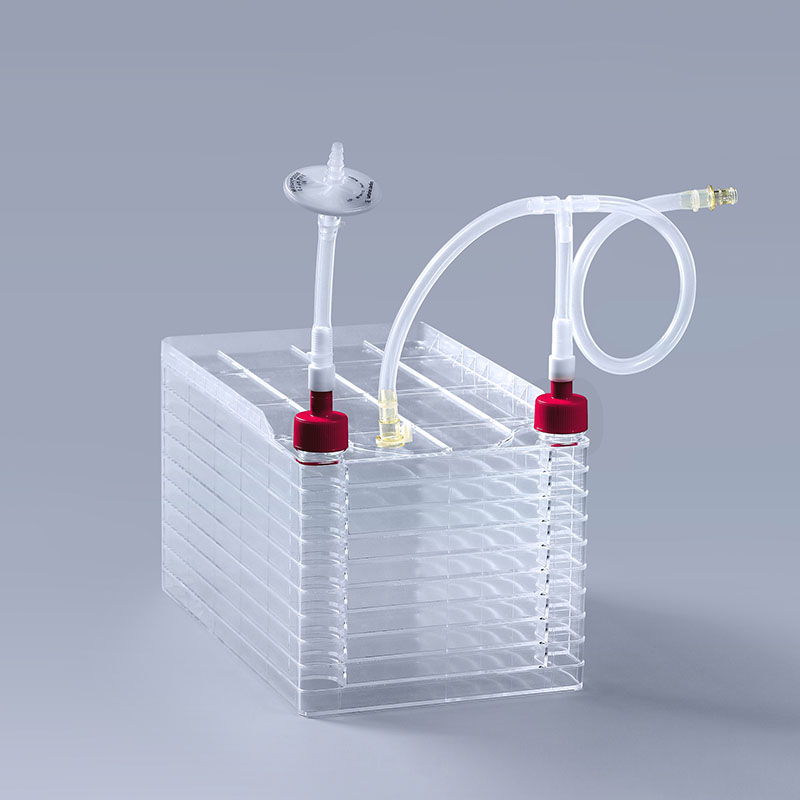Cell culture technology has become highly developed and is widely used in fields such as monoclonal antibody preparation, vaccine production, and scientific research. Cell culture requires the use of consumables, and among the diverse range of consumables available in the market, the cell factory stands out due to its unique structural characteristics.
Unlike other bottle-type consumables, the cell factory features a multi-layer structure. Common specifications include 1-layer, 2-layer, 5-layer, 10-layer, and 40-layer versions. During cell culture, culture medium is poured into each layer, and cells adhere to the bottom for growth and proliferation. Due to the high number of layers in the 10-layer and 40-layer cell factories, adding culture medium can be challenging. Typically, an automated shaker is used in conjunction to facilitate programmed, automated, and efficient large-scale cell culture, thereby significantly reducing labor intensity and density.

The multi-layer structure provides a large culture area, saving space while reducing manual operations and lowering the risk of contamination. In terms of culture area, a 10-layer cell factory has an equivalent culture area to 36 T-175 cell culture flasks. The layers are connected by special welding techniques to ensure internal environmental stability, creating an optimal growth environment for the cells.
Currently, cell factories are gradually replacing some traditional cell culture consumables and have become mainstream in the biopharmaceutical and research fields. With the rapid development of the biopharmaceutical industry, the future growth potential of these consumables is promising.
The FAI climbed 5.9 percent year-on-year in the first 11 months of 2018, quickening from the 5.7-percent growth in Jan-Oct, the National Bureau of Statistics (NBS) said Friday in an online statement.
The key indicator of investment, dubbed a major growth driver, hit the bottom in August and has since started to rebound steadily.
In the face of emerging economic challenges home and abroad, China has stepped up efforts to stabilize investment, in particular rolling out measures to motivate private investors and channel funds into infrastructure.
Friday's data showed private investment, accounting for more than 60 percent of the total FAI, expanded by a brisk 8.7 percent.
NBS spokesperson Mao Shengyong said funds into weak economic links registered rapid increases as investment in environmental protection and agriculture jumped 42 percent and 12.5 percent respectively, much faster than the average.
In breakdown, investment in high-tech and equipment manufacturing remained vigorous with 16.1-percent and 11.6-percent increases respectively in the first 11 months. Infrastructure investment gained 3.7 percent, staying flat. Investment in property development rose 9.7 percent, also unchanged.
 English
English


















































